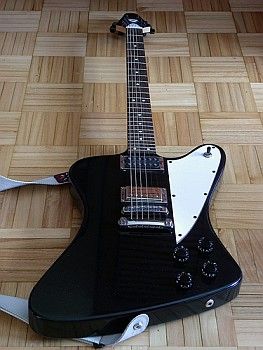Baritone Guitar EQ in the mix
To properly mix baritone guitar along with standard guitars, bass guitars and other instruments; refer to the following guide:
You need to cut standard guitar lower mid range frequencies to give way for baritone guitars. Of course this is assuming that your mix is consisting of both standard and baritone guitars. Why is this case?
In some rock bands, there are two guitarists: the lead and the rhythm guitar. The lead guitar would primarily play the high note sections of the guitar music, so it make sense that the guitarist would be using standard electric guitar.
On the other hand, the rhythm guitarist would simply accompany the lead guitar by playing heavy riffs. This riff guitar is usually played using a baritone guitar.
Below are some EQ suggestions:
Standard guitar/
a.) Cut 150 Hz -6dB (low shelf filter, to prevent mud with bass guitar sound)
b.) Cut 500 Hz Q=1.0 level= -3dB to -6dB (-3dB is sufficient in most cases, although feel free to experiment by listening carefully to your mix)
Baritone guitar
a.) Cut 1000Hz (high shelf filter) = -3dB (this will give way for electric or lead guitar tones which are high frequency in nature).
b.) Cut 150Hz (low shelf) = -6dB (increase clarity of bass guitar)
That’s it; of course the bass guitar will occupy the lowest frequencies so baritone guitar and standard guitar are both cut to give way for bass guitars.Baritone guitars occupy lower mid range frequencies from 200Hz to 1000Hz while the electric standard guitars occupy higher frequencies 1000Hz above.1000 to 3000 Hz will be prioritized for vocals. So remember to cut the guitars at this frequency range to increase vocal clarity.
If you are not familiar with shelving filters, I encourage you to read this tutorial on low shelf and high shelf in parametric EQ.
Remember that in all EQ adjustments, you will be using a parametric EQ. Read this introductory tutorial on how to use a parametric EQ if you are not very familiar on using this tool.
For EQ adjustments for the rest of the instruments in the mix, you can read this post complete EQ settings for audio mixing.
Reverb, Compression and Panning
Reverb is not actually important in baritone guitar. It is because reverb does not work well for darker tones and lower frequency instruments. You will learn more details in this tutorial on how to apply reverb to a mix. However, by recording the baritone guitar in a spacious environment (using an amp), you will get natural sounding reverb to your guitar which is more preferred than using reverb plug-ins.
Compression depends on the baritone guitar sound and style. If the guitar player plays a even volume throughout the track, compression is usually not needed. If the guitarist intentionally plays loud and soft baritone guitar tracks, then compression is also not needed otherwise it will destroy the dynamics.
Compression is needed when there are uneven volumes throughout the track for the baritone guitar and its distracting. The following are the recommended compression settings:
Threshold: -36dB (depends on the material)
Compression ratio: 2:1 (if you want more compression, increase to 2.5 or even 4, depends on the music)
Attack time: 30ms
Release time: 60ms
Bear in mind that the compression settings above does NOT apply to all baritone guitar tones. It works best for heavy riffs, etc. Try to adjust the compression settings until you get a decent sound.
For panning the baritone guitar, it can be placed somewhere around -50% to -75% or 50% to 75%. Personally since baritone guitar sounds darker, it sounds best when its nearer to the center and not pan hard left or right.
Standard guitar which has higher frequencies would sound best if panned farther from the center. Baritone guitar is not usually placed in the center of the mix except if an intentional baritone guitar solo is required.
Content last updated on July 23, 2012









No responses yet